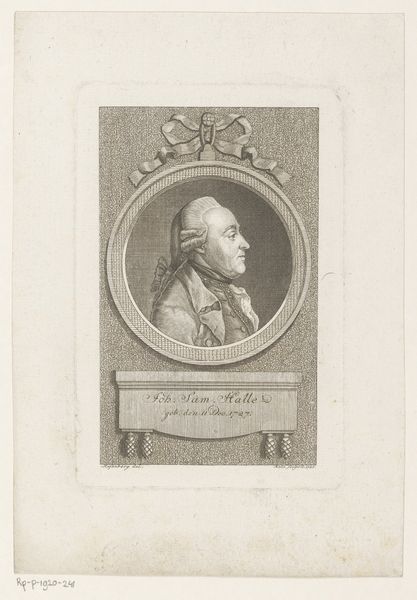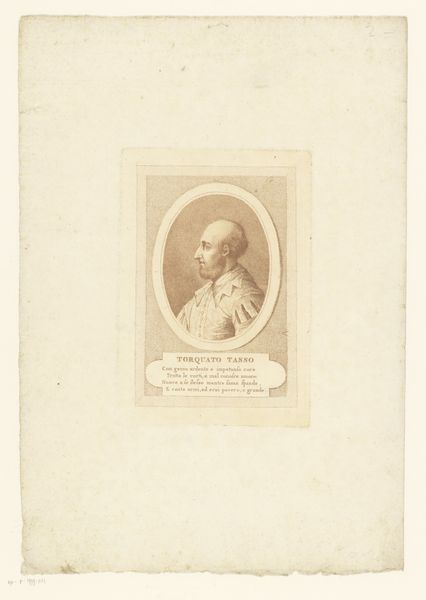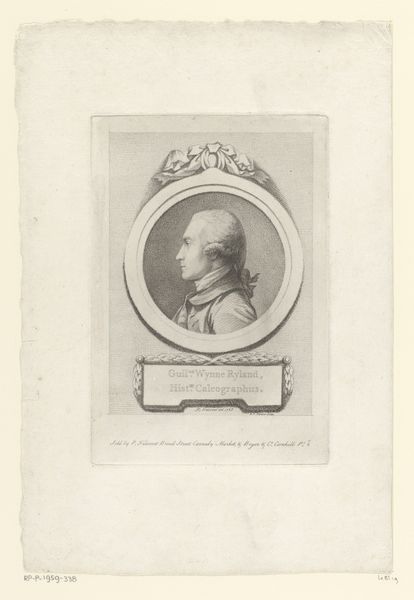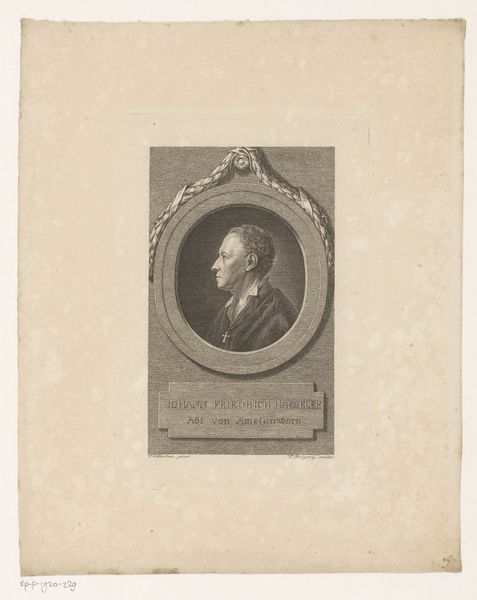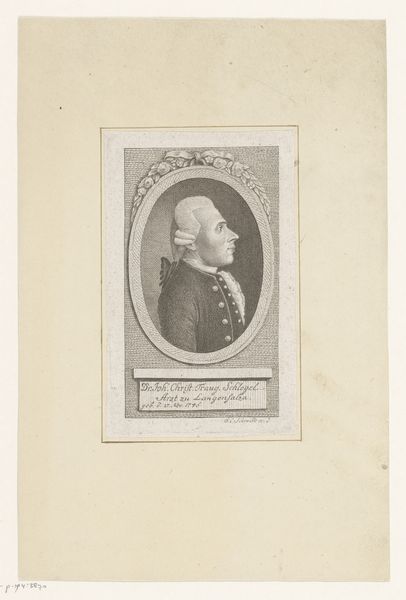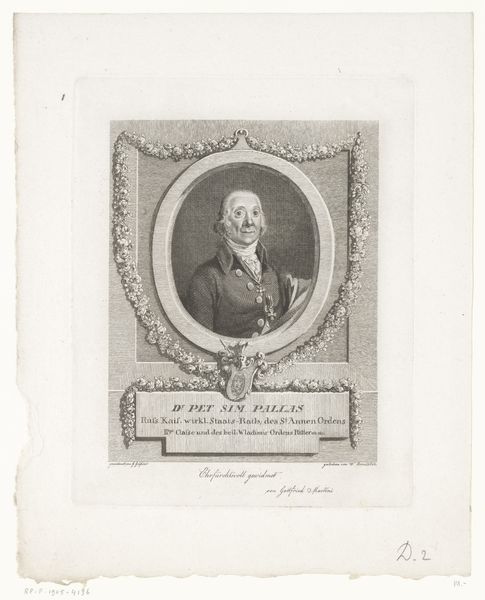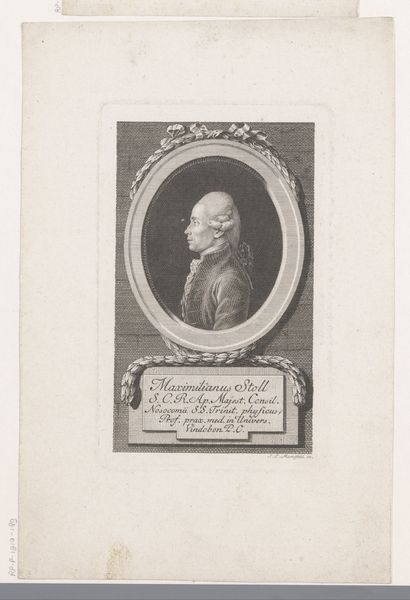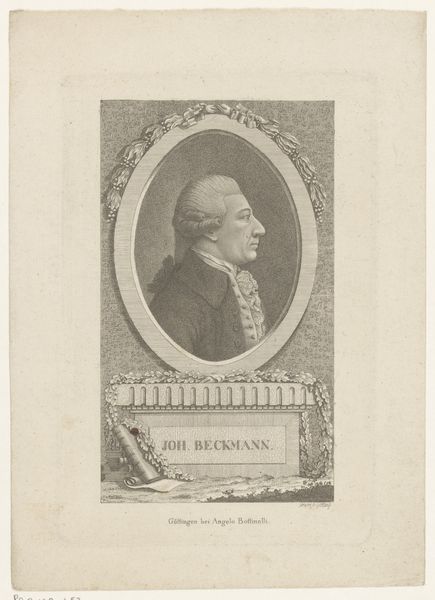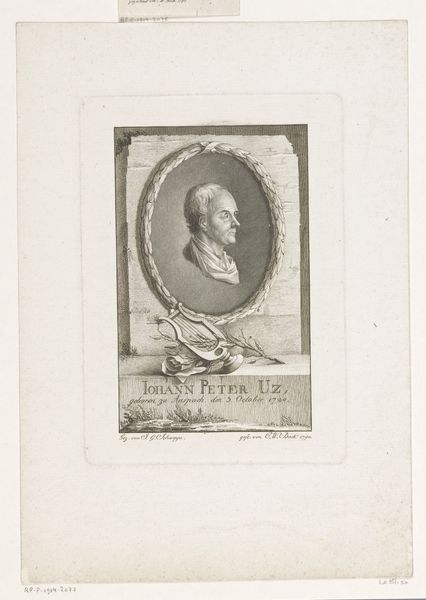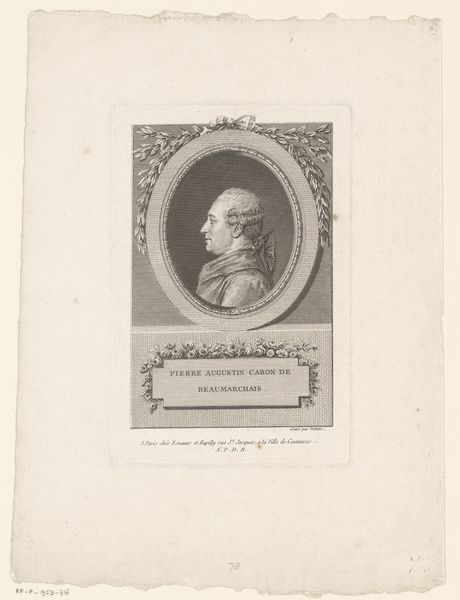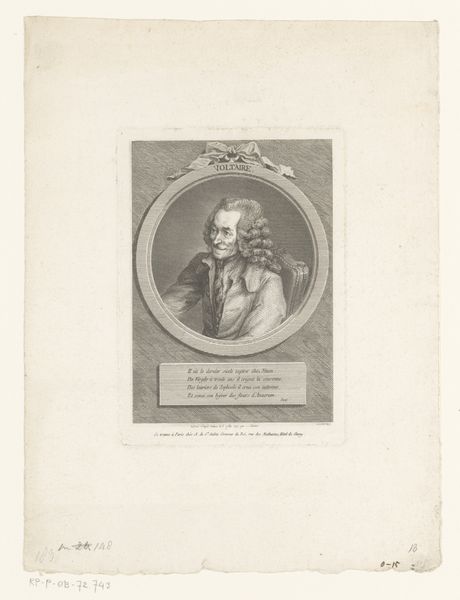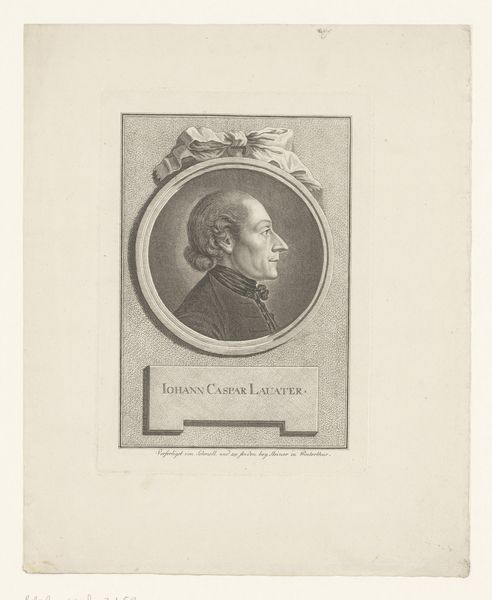
Dimensions: height 167 mm, width 119 mm
Copyright: Rijks Museum: Open Domain
This print of Salomon Gessner was made by Augustin de Saint-Aubin, in France, around 1760. It's a delicate engraving in a classical style, showing the Swiss poet and painter in profile, framed by an ornate oval. To understand this image, we need to consider the culture of sensibility that shaped 18th-century Europe. Gessner was known for his idyllic pastoral poems, celebrating the simple life of shepherds and nymphs. This art was a counterpoint to the growing urbanization and social inequality of the time. The print presents Gessner as a figure of refined sensibility, someone who could appreciate the beauty of nature. Institutions like the French Royal Academy played a key role in shaping artistic taste. Engravings like this helped spread those tastes among a wider public. Historians use a range of sources – letters, diaries, literary texts and institutional records – to reconstruct the complex social world in which art is made and consumed. By studying these sources, we can gain a deeper understanding of the values and beliefs that shaped the art of the past.
Comments
No comments
Be the first to comment and join the conversation on the ultimate creative platform.
